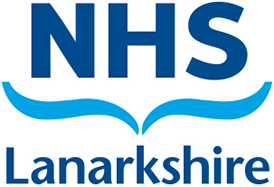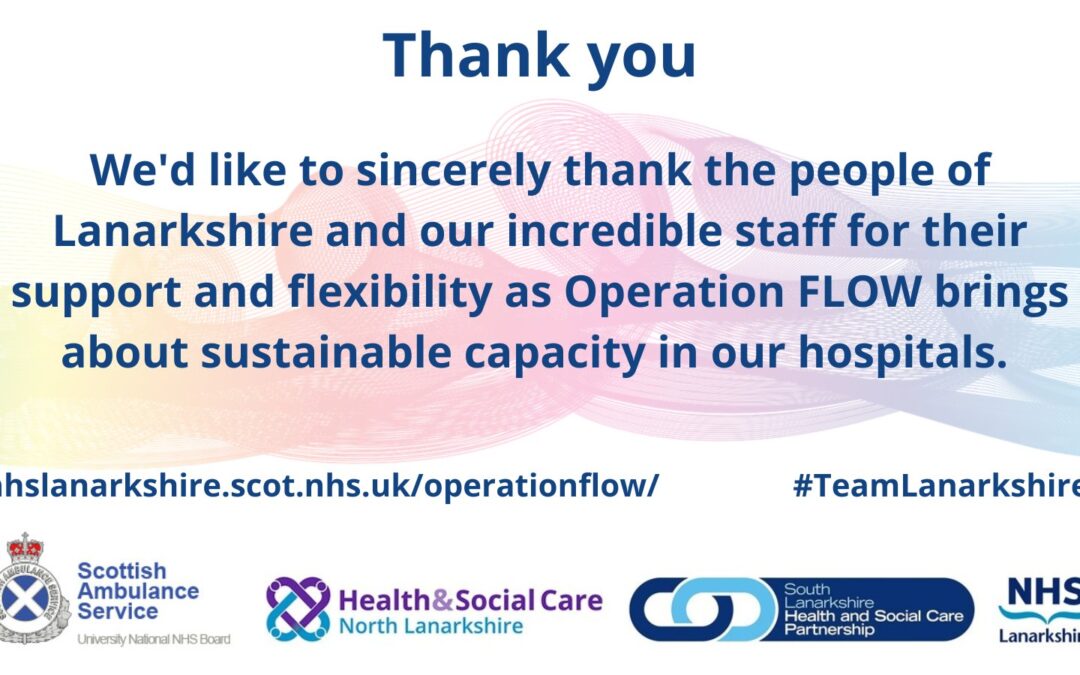NHS Lanarkshire has dramatically reduced pressure across its three acute hospitals improving patient care and experience following a successful nine-day “firebreak”.
The firebreak, part of Lanarkshire’s positive and ambitious Operation FLOW plan, has resulted in a significant improvement in the percentage of patients meeting the four-hour emergency standard.
It has also led to a big reduction in hospital occupancy levels over the nine-day period from Thursday 23 February until Friday 3 March, creating a safer and more effective environment for patients and staff.
Professor Jann Gardner, Chief Executive of NHS Lanarkshire, said: “After weeks of hard work to prepare, and a tremendous effort and focus across our whole system over the nine days, we have successfully achieved the first phase of changes to our system that have been so needed.
“Well done to all our wonderful colleagues in Lanarkshire right across our acute sites, community health and social care, and primary care. They have shown amazing focus, commitment, enthusiasm and energy to make the firebreak such a big success – and bring about immediate benefits to our patients and staff. Thank you too to the Lanarkshire public for their incredible support and understanding during the firebreak.
“We have achieved our initial aim of rapidly relieving pressure in Lanarkshire’s three university hospitals – Hairmyres, Monklands and Wishaw. While the firebreak may have ended, the service transformation is just beginning as we move to the next stage of Operation FLOW – Maintaining Good Flow.
“Significantly, our improved position has meant that we have been able to take the decision to step down from black status, the highest risk level, to red. This is the first time since July 2022 we have been in red, having previously been in black from October 2021 to May 2022.
“Getting out of black status and seeing our occupancy levels reduce below 100 per cent are huge milestones on our change journey and the result of the hard work and commitment our staff have shown before and during the firebreak.
“But they are only first steps and we know we must remain focused if we are to successfully reduce risk in a sustainable way and continue to make further improvements.
“There is much work still ahead to continue our progress and ensure we have robust and effective services to provide the best care we can.”
Operation FLOW has been developed over the last two months by the whole health and care system in Lanarkshire, working closely with key partners in North and South Lanarkshire Councils and the Scottish Ambulance Service.
Flow refers to the way patients move through a hospital, from admission to discharge. Improving hospital flow can lead to better patient outcomes, increased capacity, improved staff satisfaction, and improved patient safety. It helps reduce wait times and improve overall patient satisfaction.
Operation FLOW (Focused, Lanarkshire, Optimal, Whole System) is divided into three stages: Stage 1, Preparation & Reset; Stage 2, Firebreak; and Stage 3, Maintaining Good Flow, which will involve resetting our system to improve flow through our acute hospitals.
NHS Lanarkshire has now moved to stage 3 of Operation FLOW to build on the firebreak progress and introduce a new flow model to ensure sustainable improvements to our services.
Further information is available on our website at https://www.nhslanarkshire.scot.nhs.uk/operationflow/





